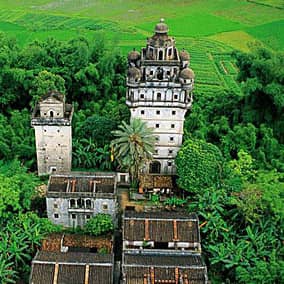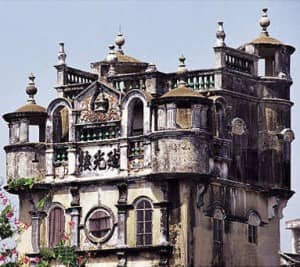Matt Shepherd
In the hayseed towns of southern China, municipalities where the population barely nudges 700,000 people, little more than a dozen words of Cantonese will get you a pretty riotous response.
The standard reaction goes something like this: your interlocuter immediately starts as if he or she has been addressed by a talking horse or dog. Consternation quickly softens into relief and hilarity on the realisation the sounds are intelligible. As curious and friendly bystanders gather, a gratifyingly large amount of praise is then heaped on you.
“Wah! You speak Cantonese! How clever of you! How long have you been here? Five years! Five years and you can speak a dozen words! That is astonishing!”
It’s such a stock response it’s surprising it’s not in the first chapter of every Cantonese language text - it’s only later that you realise this form of phatic communion is used solely to promote warmth among foreigners. A real relationship in Cantonese is based exclusively on blunt put-downs of the this-lift-won’t-move-because-you’re-too-fat variety.

When all communication comprises critical personal remarks, then you are within the keep of a person’s closest associates.
And so it was, as my travelling companion and I basked in the gentle backwash of this flattery in Guangdong province, that a thief struck with such speed and audacity that it more or less ruined the rest of the trip.
It wasn’t bad enough that he managed to extract 1000RMB from a plastic wallet leaving everything else intact, but he practically showed me how it was done.
Diving like a heron into my rolled up jacket, which I had carelessly placed above my head in the luggage rack of a bus, he removed the cash from a zipped inner pocket, left behind anything that could identify him and dropped the money into one of the small black plastic sick bags provided on all buses in China. All of this in one deft move only just out of my line of sight.
Then using the time-honoured diversionary tactic of revulsion, he walked past me and hawked and spat into the bag on top of the fold of bills. Certainly by the time he was in full view, whatever was in the bag was no longer a subject of investigation.
The discovery of the theft in the next town released a powerful surge of primitive emotions. All the free cups of tea and warm smiles were suspect, everyone a potential enemy: we were suddenly in bandit country.
While it wasn’t much money, the theft shattered the mood of the trip and we sat in gloomy silence on a bus out of Yangjiang the following day. It was on this road, under this pall, that I saw a strange dreamlike structure.
Most architecture in China - certainly anything from the 1970s onwards - pays a deep tribute to the public toilet. Covered with off-white tiles and planted like an inverted L, these clusters are utterly ubiquitous and uniformly depressing.
But rounding a corner on the bus, I saw an assemblage of 19th century Qing Dynasty hovels from the middle of which shot two square five-storey towers capped with Byzantine domes supported by a series of arches formed by columns with Ionic capitals.

The odd mixture of classical Western tropes on a Chinese building was eery and unsettling. I saw two more of these bizarre structures looming above separate small towns before the bus cruised on to Zhuhai. It’s rare in travel these days that you see something before you’ve heard about it and the towers left a lingering impression.
Back in Hong Kong, I retraced our journey on Google Earth but the villages we passed were a pixelated blur. Sifting through the Panoramio happy snaps of the area, I marveled at why anyone would take, let alone post, a photo of a motorway culvert or an irrigation ditch.
Eventually I found a picture of a squat version of the type of tower I’d seen and at least had a name - Kaiping Diaolou - or the watchtowers of Kaiping. With a UNESCO listing just four years old, the watchtowers are one of the world’s newest and strangest world heritage listings.
There are 1,883 of them remaining in the counties of Kaiping, Enping, Taishan and Xinhui - one small area of Guangdong province which, between the 1890s and 1930s, had a disproportionate number of emigres to the new world. Returning from Canada, the United States and Australia with new ideas and new styles, the emigres built towers to protect their families and fortunes in a lawless region governed by rival warlords and gangs.
The style - a kind of martial Edwardian with baroque and neo-classical features - caught on in the region and eventually more than 3000 of the towers were built, turning the province into a Chinese version of Italy’s San Gimignano.
The Fang Clan Watchtower - a typical example of the style - stands on a short rise outside Zili village. The dome on the stout five-storey watchtower covers a pavilion that housed a searchlight that swept the paddy fields for approaching brigands; a marriage of 20th century technology with medieval security solutions.
I asked my driver, Mr Fong, on a subsequent visit to the area, if the ornate style meant the towers were largely for show.
“No, they (bandits) used to come in their hundreds - sometimes on horseback,” he says, conjuring up a scene straight out of Kurosawa’s The Seven Samurai.
A closer look at the diaolou reveals that many of the architectural fittings have a nasty and efficient business end - overhanging eves hide snipers’ spider holes that point straight down to the front door step, the diaolous’ generally good state of repair is due to the fact they were made from reinforced concrete and the internal metal doors often have complex systems of bars and wheel locks designed to keep home invaders from making it to the next floor.
The diaolou, however, were not just a show of force but also a show of wealth, reflecting grand styles in the country where the emigre had amassed his fortune. At various junctures, Mr Fong’s local knowledge gives out - towers not on the Kaiping city’s guide could only be found by asking locals or making dirt track detours.
“The German diaolou is around here somewhere - I know it is,” he says, finally pulling up beside a collection of tiny farm shacks from which a Chinese version of Schloss Neuschwanstein erupts, its turrets, known locally as ‘swallows’ nests’, pinpricked with tiny gun ports.
The best clusters of diaolou are museum pieces - many of them with their original furniture - and form part of a growing tourist industry, with Kaiping the jumping off point. Thankfully, the kitsch of diaolou-themed hotels is a good 30 minutes from the best clusters and it pays to hire a bicycle to thread through the paddies on your own. What you find is Chinese history snap frozen.
Some of the towers still show graffiti or signs of forced entry from the Cultural Revolution. Even more remarkable are the groups of ‘yang lou’ or foreign villas which have yet to gain heritage protection.
After 1928, when the warlord era nominally ended in China, the architecture in the region began to relax and wealthy families constructed elegant two- and three-storey Italianate villas with minimal fortification.
Most of them are empty and where people aren’t in southern China, agriculture rushes in. Peering through the windows reveals bundles of hay and firewood stacked against sticks of 1940s furniture or beneath beautifully executed wall murals. A common theme of yang lou and diaolou murals is the modern ocean liner, usually shown steaming towards a Fritz Lang-style metropolis, the conduit of the family’s wealth and the source of its dislocation.
Riushi diaolou is the high point of the style. A baroque confection with Chinese characteristics, it is still privately owned but after calling the mobile number pinned to the door and after a small consideration, the owner Mr Huang will take you around the nine-storey tower and tell you a little of the family history.
His story is typical of the region. His father, a successful businessman in Hong Kong, had moved most of the immediate family to the British colony but returned before 1949 with the young Mr Huang to attend to a sick relative. History and events overtook Mr Huang and his father. They remained in communist China while the rest of the family still lives in Hong Kong.
Standing in the pan-opticon of the top cupola next to a rusted 1930s searchlight, I asked Mr Huang if the tower had ever been attacked.
“No,” he says, with more than necessary directness. “They never came.”
Back on the road on my bicycle, I get my second Cantonese lesson, a chapter that should be entitled ‘How much did you pay for that?’. A small group of women near a fruit seller were reasonably impressed that I’d hired my bicycle for 40RMB a day, but 12RMB for a handful of lychees! Was I an idiot? Oh well, what could I expect? I was in bandit country after all.












